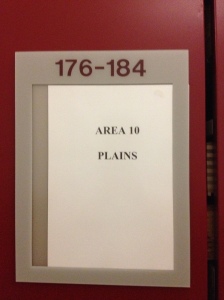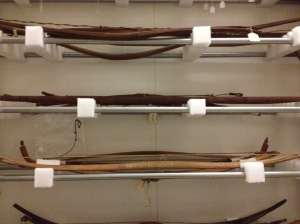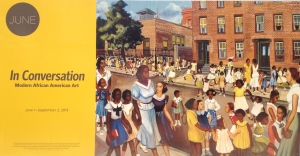Last week we had the privilege to visit and explore Harvard’s Peabody Museum of Archaeology and Ethnology for our weekly workshop. Here we were introduced to Allison Meadows McLaughlin, who is Curatorial Assistant at the museum, and the Peabody’s current interns. As well, we met with Shelly Lowe, the Executive Director of Harvard University Native American Program, who presented us with valuable insight into the Newberry Library, and fellowship and internship opportunities. From there Allison took us on a Behind-the-Scenes tour of the storage spaces that holds the museum’s collection.
Now the Peabody Museum of Archaeology and Ethnology was founded in 1866 by George Peabody and is one of the oldest museums in the world devoted to anthropology and has one of the most comprehensive collections of North American archaeology and ethnology in the world.
Such examples include (from Museum History):
- The largest collection of artifacts known to have survived the Lewis and Clark Expedition of 1804–06.
- Important collections from South America, including more than 5,000 ancient Peruvian textiles.
- The finest archaeological documentation of the Maya, as well as the most extensive and varied collection of Mesoamerican artifacts and sculpture outside Mexico.
- Early and rare historical collections from the Pacific Islands, especially Hawaii, Fiji, and Tonga.
- One of the ten largest photographic archives, documenting the cultures of indigenous peoples across the world.
- A strong relationship to indigenous communities whose histories and cultures are reflected in the collections.
With that said, much like PEM, there are artifacts that are rare and have been in the museums possession before NAGPRA’s inception.
So while on the tour I can not help but browse the massive storage area…
…till I come to the area that says, “Plains.” And of course, interest is peaked.
And there in a collection of over a million artifacts I find a small section of a handful of drawers dedicated to Plains Cree.
But as much as I would like, it ends there. The artifacts in possession are remarkable, however, three of the artifacts stand out, one that looks like a knife but is either a bear claw or eagle talon, and would most likely have been used in ceremonial practices that I have only read and heard of but never attended, and then two “dolls” with actual human hair, most likely an enemy of the Plains Cree, i.e. probably Blackfoot.
Which brought me to the question of what happens with repatriation to international communities or acknowledging that you have an Indigenous cultures artifacts who are not federally recognized. Karen Kramer, who is the curator of Native American Art at PEM, expressed that though not legally bound to repatriate internationally, there lies the hope that the message and significance of NAGPRA will live on without legalities. Such as in April of this year, PEM repatriated masks to the Maori of New Zealand, it was a long process but the artifacts are back home.
However, the “dolls” are another interesting predicament, if repatriated, where do they go? The Plains Cree community? or the enemy nation? An interesting and yet difficult predicament faced by those in the museum and heritage profession.
We were however, able to explore further and the following images are from the storage collection at the PMAE:
Bows
Arrows
Rugs
PMAE even has colonial garments from after contact
The following image of a shield that presents a leopard like animal and interestingly while I interned at the Royal Alberta Museum we had a similar ledgar painting. We could not figure out what is was and I had no idea but based on this artifact that is found in Cambridge, MA, I think we might just have found a lead.
For more information about PMAE and HUNAP see:
https://www.peabody.harvard.edu/

































